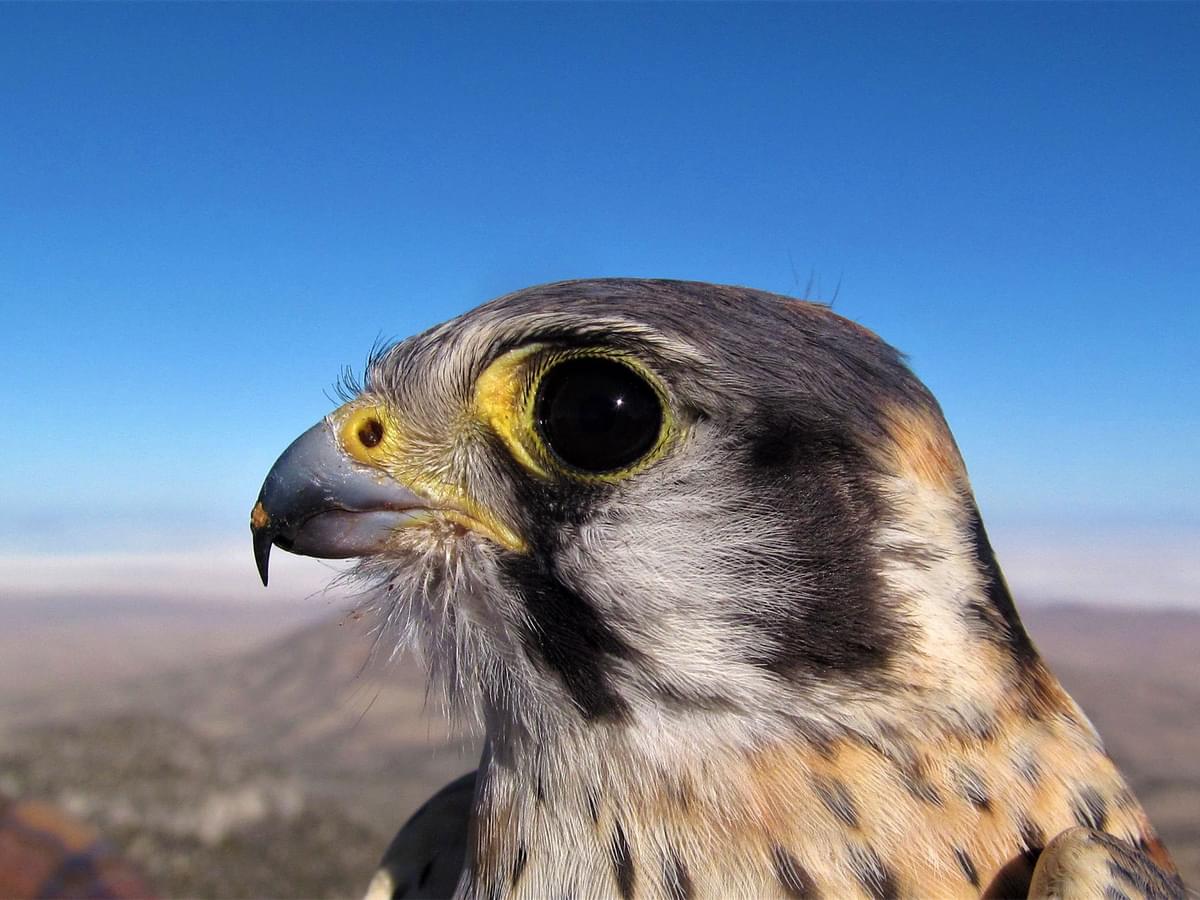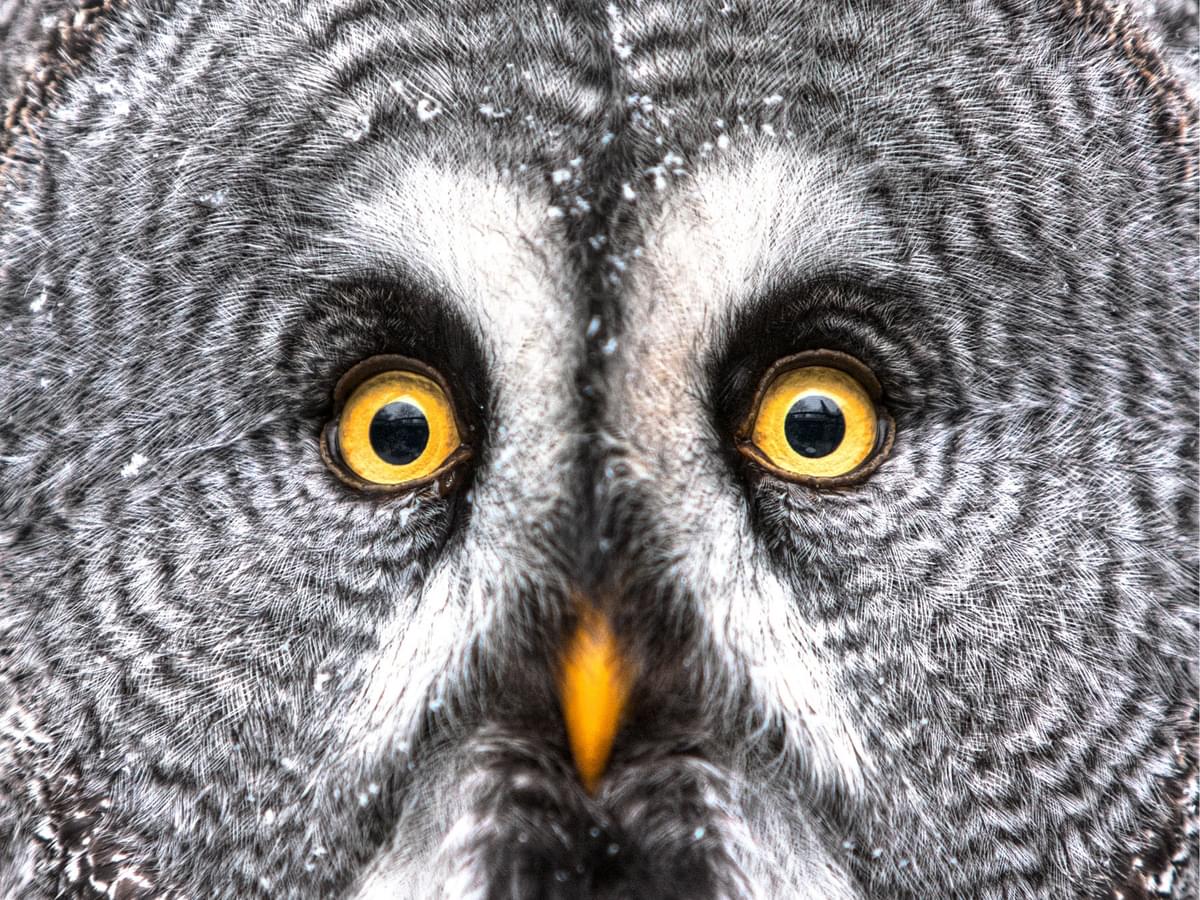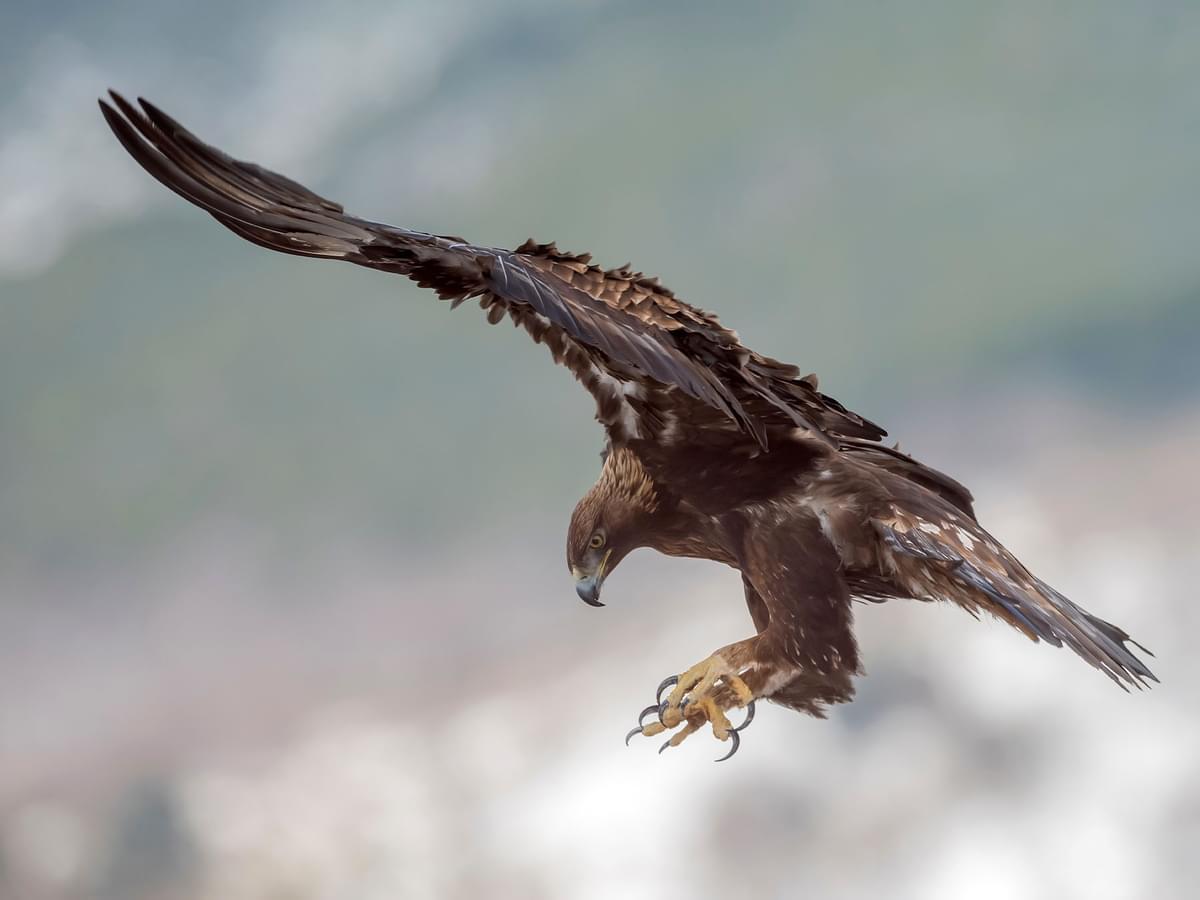Eyes and Vision

Birds have many amazing adaptations, but their vision is one of their most valuable assets. Avians rely on sight to find their food, attract a mate, escape from predators, and safely navigate the skies.
Birds have color vision, but unlike us, they can see in ultraviolet, which opens up a whole world of colors that we’ll never know. They also have impressive distance vision, the ability to adjust for light refraction through water, and incredibly wide fields of view.
In this introductory guide, we’ll be delving into the eyesight of birds and learning more about this avian superpower. Read along with us to learn about the bird’s best sense.
The Basics of Avian Ocular Anatomy
Parts of the Eye
The avian eye is a complex structure. Continue reading to learn about some of its most important components.
Cornea and lens
The cornea is a transparent covering over the external surface of the avian eye. The lens is located within the eye, and it focuses light passing through the pupil and onto the retina.
Sclera
The sclera is a layer of tough tissue surrounding the rest of the eye’s surface within the orbit. It protects the eye and maintains its shape.
Iris
The area surrounding a bird’s pupil is known as the iris. This often colorful tissue expands and contracts like the aperture of a camera lens to control the amount of light reaching the retina.
Ciliary Body
The ciliary body is a muscular structure that controls the shape of the lens.
Retina
The retina is the photosensitive surface at the back of the eye that converts light into electrical signals. It contains two major types of photoreceptors called rods (used in low light) and cones (used for color vision).
Pecten oculi
The pecten oculi is a somewhat mysterious structure near the back of the eye that is rich in vessels for supplying oxygenated blood and nutrients. It is thought to help regulate pH within the eye and perhaps also for shading the retina.

A portrait of a Spotted Thick-knee. Birds have many amazing adaptations, but their vision is one of their most valuable assets
Size and Positioning
Birds have very large eyes relative to their body size. In fact, the largest eye of any land animal belongs to the Ostrich, despite being a much smaller species than land mammals like Elephants.
Eye size is proportional to body size within different bird families, but across them, it varies according to feeding strategies. Raptors and Owls, for example, have enormous eyes for hunting prey at high speeds and seeing in low light.
The position of a bird’s eyes varies depending on its foraging behaviors and place in the food chain. Birds of prey have eyes on the front of their head, just like we do, but most other birds have eyes on the sides of their head.
The difference in eye position affects the size of the area that birds can see and how they perceive depth. Eyes on the side provide a wide field of view for detecting the movements of predators, while eyes in the front allow binocular vision for zoning in on prey and coordinating the hunt.

A Great Horned Owl. Eye size is proportional to body size within different bird families, but across them, it varies according to feeding strategies
Unveiling Color Vision
Ultraviolet Perception
Birds have a special talent. They can perceive ultraviolet light and, therefore, see a whole range of colors that we cannot detect. Seeing ultraviolet light may help birds in signaling their fitness to mates, foraging for foods that reflect in UV, and even in homing and orientation.
But how can birds see light in the ultraviolet wavelength range when we can’t?
Tetrachromacy
Birds have tetrachromatic vision, which means they have four types of light-sensitive cones (we have three). While we perceive red, green, and blue, and combinations of those three colors, birds include ultraviolet and all its combinations.
Color Vision and Behavior
Color vision benefits birds in several ways. Their bright plumage implies that color is essential for visual communication between individuals of the same species, and many male birds develop colorful plumage before the breeding season to communicate their fitness to potential mates.
Seeing in color also helps birds while foraging, allowing them to detect ripe fruits, for example, or avoid toxic insects with a bright warning (aposematic) coloration.

A Painted Bunting. Many male birds develop colorful plumage before the breeding season to communicate their fitness to potential mates
Specialized Visionary Adaptations
Polarized Light and Magnetic Fields
Birds don’t only see colors that we can’t - they also see directions. Some birds can perceive the Earth’s magnetic field, and they are also believed to perceive polarized light, which they can use for orientation.
This ability to orientate by light and magnetic fields is especially handy for migratory birds that must navigate between their breeding and overwintering grounds.
High Refresh Rate
Birds have incredibly fast vision, which is essential for creatures that move at high speed and catch fast-moving prey.
Research on birds of prey has shown that Peregrine Falcons can perceive blinking light at nearly 130 flashes per second, while a separate study demonstrated that Pied Flycatchers can perceive the world at an astonishing 145Hz!
Fovea and Sharp Focus
The fovea is a pit-like structure on the retina where light receptors are packed especially densely. Their function is not fully understood, but they are thought to enlarge the image or assist in focusing and detecting movement.
Most bird species have a single fovea in each eye, while some have two and others have none at all.

A European Pied Flycatcher. Astudy demonstrated that Pied Flycatchers can perceive the world at an astonishing 145Hz!
Protective and Functional Features
Nictitating Membrane
Birds have an upper and lower eyelid, much like we do. However, they also have a ‘third eyelid’ that opens and closes horizontally or diagonally. This structure, called a nictitating membrane, lubricates the eye and protects the cornea from dust and foreign bodies.
This elastic membrane opens and closes very frequently in some birds. Ostriches, for example, blink their outer eyelids just once a minute but open and close their nictitating membrane almost every second.
Harderian Glands and Vision
Birds have ‘tear’ glands in their eyes that are used to protect their cornea and maintain sharp vision.
The harderian gland secretes an oily fluid onto the nictitating membrane that helps to lubricate the eye. This protective gland also triggers an immune response to pathogens that enter the eye.

Ostriches blink their outer eyelids just once a minute but open and close their nictitating membrane almost every second
Vision Across Different Bird Species
All birds have well-developed eyes, but there are important differences in vision between families and species. Continue reading to learn about some remarkable avian eyes.
Owls
Owls have very large, tube-shaped eyes, and their retinas are dominated by rods to improve low-light vision. Such odd-shaped eyes limit their movement in the socket, so owls have evolved to rotate their heads an amazing 270 degrees to look in different directions.
Owls also have a reflective layer behind the retina called the tapetum lucidum that bounces light back through for a second pass. This improves their low-light vision and results in the ‘eye-shine’ we see when owls are lit up by torchlight.
Eagles
Eagles look for prey from a perch or while soaring high above the ground. They can spot a meal from an incredible distance and are said to have eyesight many times stronger than our own. Eagles have two fovea, which are parts of the retina densely packed with photoreceptors, and their massive eyes can function like a zoom lens to detect prey up to a mile away.
Kingfisher
Have you ever noticed how water seems to ‘bend’ objects? This phenomenon is the result of water refraction, and it creates a challenge for birds like Kingfishers that dive below the surface to catch their prey.
Kingfishers have binocular vision and two foveas in each eye to help judge the depth of the water and compensate for refraction. They rely on their nictitating membrane to protect their eyes when underwater.

A Golden Eagle. Eagles look for prey from a perch or while soaring high above the ground

Kingfishers have binocular vision and two foveas in each eye to help judge the depth of the water and compensate for refraction
Summary
From tetrachromacy to nictitating membranes, birds have a host of remarkable ocular adaptations to navigate the world and give them that edge over their predators and prey.
Even in the 21st century, scientists have much to learn about the function of unique structures like the pecten oculi and fovea, and it’s exciting to think about all the new discoveries left to be made!
While we can only imagine what having eagle eyes would be like or what our backyards look like in ultraviolet, learning about how our feathered friends see can teach us a lot about how they interact with the world around them.



